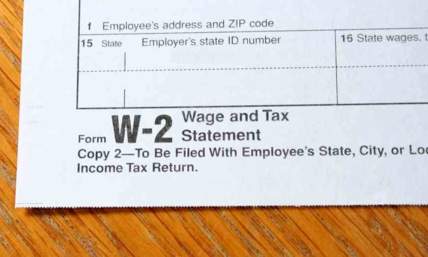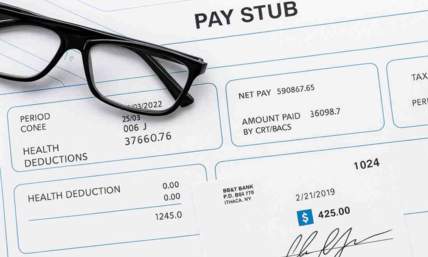How To Calculate Total Revenue - The Full Guide
As anyone who works in accounting or runs a business will know, there are a million ways to view revenue and profit numbers; using financial formulae, spreadsheets, and financial statements. These values can be broken down and analyzed from numerous angles. However, one of the most critical factors to any production is your total revenue income or the total amount that your company brings in before expenses are considered.
When looking for past total revenue figures, your income statement should always be your first port of call. This figure should be at the top of any income statement and is easy to find. If, however, you are looking to predict or forecast what your total revenue income will be in the future, your income statement will not be that useful. Maybe you are trying to figure out if it would be a good idea to lower your prices or offer a discount on services, in this case, the best tool to use would be the total revenue formula. This will help you forecast profits for your business with just a few simple steps!
Table Of Contents

The Formula For Total Revenue
The absolute best way to simply calculate how much revenue you will make is through this formula. To forecast how much profit a business will make in the future, typically you might just rely on your income statement to get a baseline of how much your company has sold historically, this can often lead to relying heavily on formulae. Another key factor businesses often monitor is the interest rate forecast, as changes in interest rates can directly impact borrowing costs and consumer spending, which in turn can influence revenue projections. Instead, you can use this simple calculation for forecasting purposes, it can save time and is generally more effective
The formula for calculating total revenue looks like this;
TOTAL REVENUE = QUANTITY SOLD X PRICE
For example, a baker might sell a loaf of bread for $8 per loaf, if he regularly sells 100 loaves each month his total revenue will be $800 a month (100 x 8 = 800)
Now, where this formula becomes especially useful is if a company, for example, the baker again, decides to lower his prices to $6.50 to try and increase sales, he can predict how much his total revenue will drop if he still sells the same amount of bread (100 x 6.50 = 650) so his total revenue per month would drop to $650 if his sales remain the same.
You can also use the same formula to determine how many more loaves of bread the baker would need to sell at the reduced price to match his previous revenue for the month. This is done by dividing his previous revenue by the new lower price.
So, (800 / 6.50 = 123) the baker would need to sell 123 loaves of bread at this discounted price in order to match what he had previously earned in total revenue. This decision, of course, relies on the baker or any business owner having a strong knowledge of the market in which they sell, as lowering the price to increase sales is a bold move and means many more products will have to be sold to see an actual profit. It is also vital that you know your target audience for any product you sell as marketing and other selling methods for your product will rely on this knowledge.
Also read: Is Depreciation an Operating Expense?

Also read: Check Your EIDL Loan Status
Your Income Statement and What It Shows You About Total Revenue
You can also find the total revenue for your business on your income statement. Each income statement is essentially a finalized history of how your business has performed over a period of time. The statement can range from monthly, to quarterly to yearly, but it is often advised that monthly statements are easier to keep track of revenue and profits.
In comparison to other statements and financial documents, an income statement is fairly easy to read as all the information is presented in a very straightforward and standard way. The main sections of any income statement are as follows;
-
Total Revenue - This is usually the first section of the statement and one of the most important. It will tell you the total amount of money that your business has brought in over this period. It can be from your main or primary source of income, as well as any other sources of income you may have.
-
Cost Of Goods Sold - The COGS will break down the cost of producing the goods that your business sells during this accounting period. Anything that is essential to the production of your product or goods, which can range from staff, materials, software, office supplies, etc belongs in this category.
-
Operating Expenses - This section differs from the Cost Of Goods Sold as it breaks down everything you spend on operating your business over this accounting period. This could be warehouse or office rent, marketing expenses, or even office snacks. Now, when you subtract operating expenses from gross profit, you will get your net income - or what some people just know as profit.
Also read: How to Remove IC Systems From Your Credit Report
Why Is Total Revenue So Important
There are so many factors to consider when pricing your products and services. If we look at the example of the baker again - if he does go ahead and discount the price of his bread, will the cost of producing each loaf go down as the volume increases? Would he maybe need to hire an assistant baker to keep up with the demand? Will this slow down production time?
All of these questions and many more need to be factored in when making these vital business decisions. The Total Revenue Formula gives you, as a business owner, the best place to start when considering pricing.
If your total revenue numbers look successful, you can then begin to consider other possible expenses like software, office supplies, rent, etc. Total revenue will always give you a starting point for your business and it is for this main reason that it is invaluable to any company or business.
Our pay stub generator produces high-quality and reliable pay stubs. It is wise to have this process nailed down, especially in times of disaster.
Also read: Snap Finance Review
Also read: Stop Enhanced Recovery Company And Remove From Your Credit Report
















